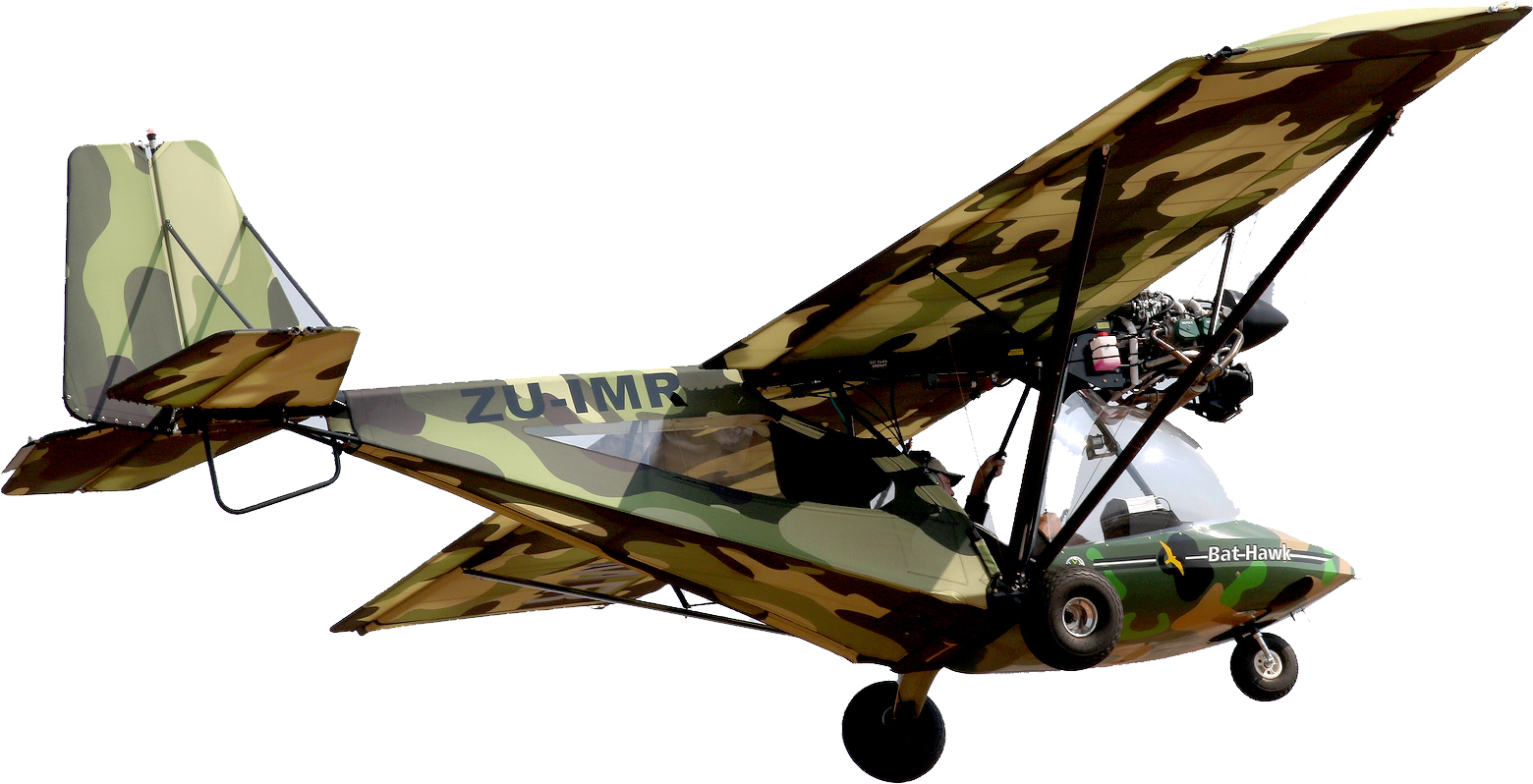| |
LP14 Bathawk
Gary Satiwitz - South Africa
+27 82 828 6706 [email protected]
The Bat Hawk is a proudly South African “Light Sport Aircraft” designed and built for tough for African conditions.
THE WORLD'S MOST AFFORDABLE LIGHT SPORT AIRCRAFT
The aircraft is supplied as a complete ready to fly and complies with the ASTM2245-12c Build Standard rules and regulations as well as South African Civil Aviation Type Approval.
It features a strut braced high wing, a two seats in side-by-side configuration open cockpit, fixed tricycle landing gear and a single Rotax engine in tractor configuration.
As a conventional 3-axis light sport aircraft, the Bat Hawk does not rely on pilot weight shift to affect control. Twin seats are positioned side-by-side for full dual control and both crew members are well protected from the weather by an aerodynamic fibreglass pod and large wrap-around windshield.

|
The Bat Hawk is a high wing monoplane with the crew of two seated side by side in an under slung tubular framed structure surrounded by a glass fibre composite fairing.
Crew members are protected from the weather by a very large wrap around windshield. The propeller and the engine are mounted in a tractor position above and ahead of the crew. The empennage is conventional in location and layout. The undercarriage is a tricycle arrangement with a steerable nose-wheel. The wing, which is strut and lift wire braced, has two tubes forming the spars, one at the leading edge and one at the rear edge of the wing. All the above parts are manufactured from corrosion resistant aluminium alloy and stainless steel wires, whilst the air-frame and wings are covered with tensional Dacron sailcloth.
|
Attached to the rear spar are full span flaperons of similar construction and covering. They work independently as ailerons and together as flaps. There is no flap position indicator but approximate settings can be determined from the flap selector angle. Maximum flap movement is restricted by a limit stop mounted on the flap lever quadrant.
The fin, rudder, tail plane and the elevator are also of similar materials and construction .Tubes form the leading and trailing edges with the section being flat sided between. The rudder is actuated by cables running from the pedals. A control stop for the pedals is fitted at the front of the fuselage tube. The ailerons are controlled by cables from a torque tube connected to the central control stick, which has a built-in control stop. The elevator is actuated by a push/pull cable attached directly to the control stick which has built-in stops.
|
DIMENSIONS
Overall length – nose to rudder TE 18.19 feet (5.544m)
Length – propeller plane to rudder TE 17.40 feet (5.304m)
Undercarriage wheel track 5.42 feet (1.652m)
Main wheel size 8.00 x 6.ins
Nose wheel size 4.00 x 4.ins
Typical empty weight–standard equipment 573.2 lbs (260 kg)
Maximum fuel 123.0 lbs (56 kg)
Maximum weight all-up weight 1204.2 lbs (540 kg)
Minimum solo crew weight 163 lbs (74 kg)
Average dual crew weight 396.8 lbs (180 kg)
Take-off weight with full fuel/average crew 1100.0lb (499 kg)
|
BAT HAWK 100 H.P. 4 CYLINDER 4 STROKE
Cruise Speed: 70 knots
Stall Speed: 36 knots
Vne: 92 knots
Length: 6,00m
Wingspan: 9,50m
Height: 3,20m
MTOW: 540 kg
Empty: 260 kg
Useful Load: 280 kg
Take-off Run: 30-50m
Landing length: 50-60m
|
|
Additional
| |
